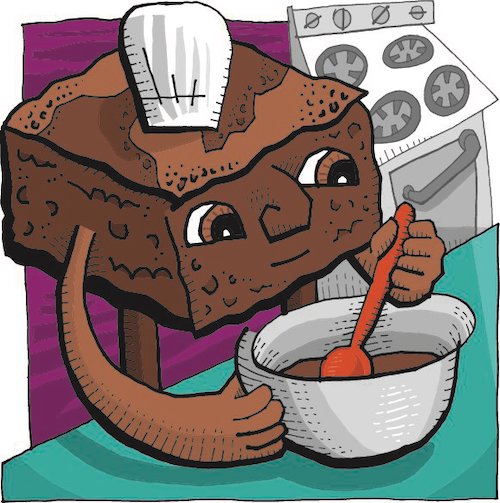The USDA’s shorthand definition of a preservative is any substance that slows or stops the deterioration of food. The sugar we add to make jam to keep fruit from rotting is a preservative. So is the salt we use to cure ham. We’ve employed preservatives like sugar and salt for millennia.
And then there are modern preservatives.
More recently, we’ve started isolating all sorts of chemicals and adding them to foods. You can spot them on ingredient lists. In breads and baked goods, for example, it’s not uncommon to see an antimicrobial like calcium propionate, which inhibits the growth of mold. Or you may see EDTA, AKA Ethylenediaminetetraacetic acid (say that five times fast!), which keeps elements in foods like zinc or copper from being available to microbes that need them to function.
Don’t get me wrong, the use of preservatives isn’t inherently a bad thing. Our ability to preserve food has helped humans survive travel, famine, and long winters like we get in Michigan. But it’s worth asking why we want to preserve a food. Do we want to add sugar to strawberries to make a jam so that the strawberries don’t rot and we can eat them in the winter when strawberries aren’t in season? Sounds like a good idea! Do we want to make hardtack—a very, very dry biscuit—so we have a way to store and eat wheat on a long sea voyage? That doesn’t sound very delicious, but it will probably help keep the sailors alive—let’s do it! Do we want to add calcium propionate and EDTA to a loaf of bread so that it will last an extra week on the grocery shelf and the grocer has an easier time handling the product? Well, perhaps we do if we’re the grocer. But in this case, it’s harder to see the benefit for the bread eater.
That’s the thing. Many attempts at preserving food are more about convenience than quality. A loaf of bread that’s been sitting on the grocery shelf for a week is never going to taste as wonderful as one that’s freshly baked, no matter how many preservatives have kept it from molding. The reason to add preservatives to baked goods is not to make them taste better. It’s to make them more convenient for the baker and merchant to handle while waiting for someone to buy them.
At Zingerman’s, we don’t add any preservatives to our breads or pastries.
No calcium propionate. No EDTA. This means they have a relatively short shelf life, usually somewhere between a few days and a couple of weeks. When we ship them we include a recommendation on how soon they should be eaten. You can also freeze them for a long time. But beware the refrigerator!
Why the fridge makes your baked goods go stale fast
As a loaf of bread stales, its texture gets drier. This isn’t related to any moisture it may be losing. It’s because the chemical structure of the starches in the bread change. They become more crystalline with each passing day. This happens especially quickly at temperatures just above freezing. In On Food and Cooking, Harold McGee references a study that showed that a loaf of bread stored in the fridge at 46° F got as stale in one day as another loaf of bread stored at 86° F did in six days. In other words, the fridge stales baked goods!
We recommend against storing our breads and pastries in the fridge. To prevent staleness, it’s best to freeze any bread or pastry you want to keep longer than a few days. Freezing stops the crystallization process.
To revive a bread or pastry that has started to stale a bit, heat it up in the oven or toaster. Heating decrystallizes the starches, magically returning the baked good to the moist, delicious texture it had when it first came out of the oven. To aid you in performing this magic trick, all of our breads come with heating instructions. They’re available on our website for handy reference, too.

